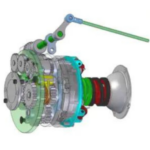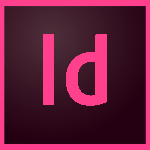Seasoned 3D modelers and CAD designers understand whether certain parts a project require 3D modeling software or a 3D rendering program instead. Beginners may confuse one with the other and use the wrong tool for the job. Some programs offer an extensive list of features and options to handle both modeling and rendering, but knowing the difference between the two will help you make an educated decision about which software to use for the specific function needed for your project.

3D modeling
3D modeling focuses on creating hyper-realistic visual representations of a real object in either a digital format or as a solid prototype. Not only does the model depict the external appearance of the object, but it also gives physical properties such as depth, volume, weight, texture, materials, and behaviors.
The objective is to create as lifelike a model as possible. Using 3D CAD software, designers can incorporate multiple data points to help determine the proper dimensions and accurately predict how the model will perform in real-life situations. The model can be viewed from all angles, animated on a computer screen, or (if the dimensions allow) materialized using a 3D printer.

3D rendering
3D rendering only deals with modeling in digital format. It has nothing to do with creating a physical prototype. However, the process can start as soon as a 3D digital model is ready to be rendered. In most cases, a hyper-realistic digital image of an object is satisfactory for engineers and manufacturers during the designing process but often too technical when used for other purposes such as marketing and product presentations to investors.
More than just a standalone digital depiction of an object, 3D rendering tries to put everything into perspective. In other words, the 3D model is modified to incorporate data points from external factors like orientation, comparison to other objects in a single frame, lighting and shadows, backgrounds, etc. Photographic composition is crucial in 3D rendering because it shows how the object will appear in real life with regard to human visual perception.
Some modelers prefer to use software that offers both modeling and rendering functions, but such software is likely too complicated for beginners. This doesn’t mean a specialized program is much easier to use, but it’s certainly less confusing. The following is a list of the most popular 3D rendering software modelers of all levels.

1. Blender 3D
Let’s start with Blender 3D, arguably the most popular. It’s an open-source, free, all-in-one 3D creation suite that supports most (if not all) functions for modeling, rendering, simulation, animation, rigging, motion tracking, compositing, game creation, and video editing.
The beauty of Blender 3D – like other open-source software applications – is that it’s continually being developed by hundreds of capable programmers from many different professions, including scientists, artists, visual effects experts, game creators, and even students.
Everyone contributes to improving the software so that every user finds the perfect combination of features for their needs. Let’s not forget the benefit of having the combined expertise of a large community of modelers to answer all your questions about 3D rendering. Considering that Blender 3D is 100% free to download and use, it’s the bargain of the century for all modelers.

2. Lumion
There are probably hundreds of modelers in every online community you’ve come across that have allowed you to share ideas or ask questions and know you’ll get feedback sooner rather than later. Along the road to becoming an expert 3D modeler, you must listen to others’ opinions and input, even if it isn’t all positive feedback. You need to use a file format everyone can open to do this.
One thing that makes Lumion a must-have is its compatibility with almost every other 3D rendering software on the market. This is the software you need to share and showcase your abilities to others. When it comes to functionality and usability, Lumion comes with one of the most user-friendly interfaces around. It doesn’t come without a learning curve, but the software is designed to help you create a 3D rendering with minimal effort. When used correctly, and despite its seemingly “for beginners” approach, Lumion can deliver lifelike rendering, especially for architectural purposes.

3. SketchUp
If you know the basics of 3D modeling and rendering, chances are you already have SketchUp installed on your computer for several excellent reasons. First, SketchUp is not a particularly hardware-demanding software. You don’t need half a dozen processors or the most expensive graphics card to run it smoothly on your computer. Second, the software was created with students and beginners in mind.
All the tools are easy to use and understand, suitable for those who aren’t yet ready to use more sophisticated programs or are still unsure whether they want to learn more. Another important reason to download SketchUp is that the software is available for free. In a practical sense, SketchUp is better at 3D modeling than 3D rendering. To compensate for this limitation, the software can be coupled with a rendering program called LuxRender which is also free.
Both programs work flawlessly with each other, providing an excellent setup to help take your skills to the next level. A lot of modelers think of LuxRender more as a requirement for SketchUp than an optional component. Everybody has to start somewhere, and the combination of SketchUp and LuxRender is an excellent place to do it.
4. Maxwell by Next Limit

Used by professional architects, Maxwell probably has more tools that you’ll ever need to create a mesmerizing 3D rendering, and that’s an understatement. It has been around for a long time and offers the support of a dedicated community to help you get started. The user interface is so simple that it’s almost impossible to miss any function you may want to use, even if you’ve never used it before.
Plenty of architecture students use Maxwell for quite some time before they move on to other professional programs. Maxwell also offers a plug-in for SketchUp, allowing you to work within the same interface for both applications. Just because it’s popular among architects doesn’t mean Maxwell can’t be used in other industries. You can render every 3D model you come across with it.
5. V-Ray by Chaos Group

Developed by the Bulgarian company Chaos Group, V-Ray is not standalone software but a plugin designed for various popular 3D rendering programs, such as Blender, SketchUp, and Autodesk 3ds Max. This is a heavyweight rendering engine used by reputable commercial studios worldwide. Getting used to all the options and functions V-Ray provides takes time.
First-time users may find it overwhelming, but the complexity befits its capabilities. Some say that V-Ray is the most potent rendering engine in the world today. If learners can get past its relatively high price tag, they can master it well ahead of their peers and create an impressive resume when they decide to enter the professional field.
6. Corona Renderer

Developed in 2009, this software is still relatively new to the market. In 2017, it became a part of Chaos Group. It’s available as a standalone CLI application, but more popularly as a plugin for Autodesk 3ds Max.
It’s worth mentioning that Corona Renderer is a CPU-based program, so it doesn’t depend on how powerful your graphics card is. The combination of speed and quality makes it an easy to love rendering software. Deep integration with 3dS Max gives you more native materials to work with, so you can create even more realistic renderings.
7. InDesign by Adobe

Beginners should work on more straightforward projects and build a reputable portfolio before taking on more complex modeling and rendering tasks. 3D rendering isn’t always about interior design, cars, animals, and water motion. In other words, you don’t always need fully-functional and rendering-specific software.
Adobe’s InDesign might not seem like an obvious choice for many modelers, because it deals with the formatting of newsletters, magazines, presentations, brochures, and books. That being said, it does offer some photorealistic techniques. InDesign is perhaps the simplest in the list and doesn’t take much expertise to master. Nevertheless, the additional skills you learn with the program are valuable to your reputation as a professional modeler.
Which 3D rendering program is best for you?
All modelers have preferences regarding which 3D rendering software is best for them. It all depends on the hardware specifications you use and what images you want to create. It isn’t impossible to use multiple programs, but more often, that isn’t a wise investment. If possible, use as many trial and free programs as you can before you make a purchase. Although, indeed, premium commercial software isn’t always better than its free counterparts, there will be some limitations you can only compensate for by purchasing a full version of 3D rendering software.
One of the benefits of using Cad Crowd to hire 3D modeling or rendering freelancers is that you don’t have to pay for any 3D modeling programs. All of our freelancers are trained on and equipped with top-of-the-line modeling software. Save yourself the time and money of purchasing expensive software and training your employees on it by hiring a freelancer through Cad Crowd to handle all your 3D rendering needs. Tell us more about your project, and we’ll send you a free quote!


This article doesn’t mention Maya at all. It is hard to take seriously any article that doesn’t even acknowledge its existence, even if to put it down. It’s still the one package you need to know; then, you won’t get a job in the gaming industry as a 3D artist. No matter how evangelical you are about Blender.
Good suggestion, we’ll add Maya in our next update of the article. Thanks!